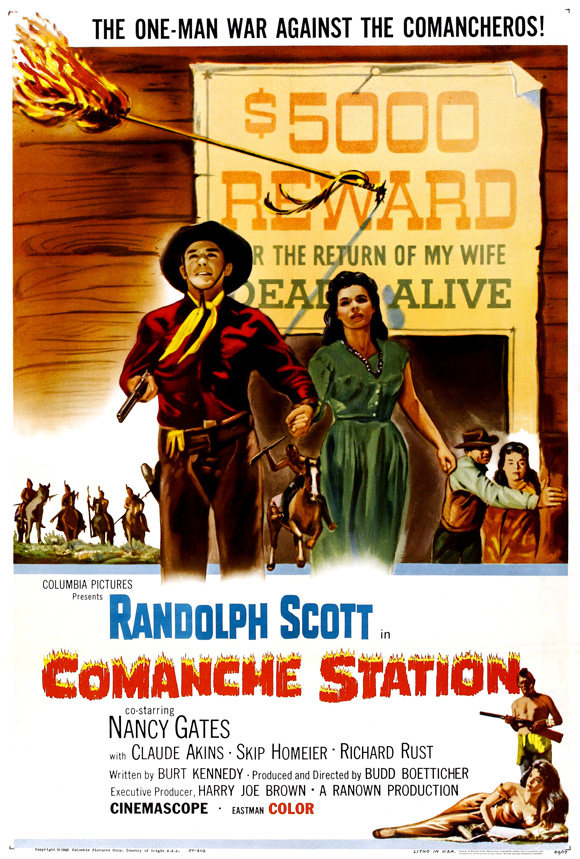
Budd Boetticher's Comanche Station might just be the greatest film ever shot in twelve days. It's lean and mean, with a small cast, absolutely no interiors and only two exterior sets that needed dressing. Its script is short, with terse dialogue that suggests much without going into detail about anything.
As a model for how to shoot landscapes, with people and horses moving through them, the film cannot be bettered, even in John Ford's Western oeuvre. Some of the long tracking shots of people riding and talking are like self-contained lyric poems. The action sequences are choreographed with unerring skill, a sure sense of the drama inherent in complex movements through space — beautiful without ever becoming glamorous.
Horses are not props in this film, as they are in almost all modern Westerns — they are true characters in the story, shot with admiration and respect for their magnificence and grace and power. Boetticher knows that a horse and rider crossing a deep river is among the most beautiful things it's possible to witness on this earth.
One could almost call this a chamber Western, except that there are no chambers in it — only rugged country and big skies and people trying to stand out against them. In Boetticher's universe, they do this by acts of moral, not physical, heroism, although the latter tend to flow inevitably from the former. It's a small work by Hollywood standards, but it's bigger than Avatar in its mastery of storytelling and cinematic form — it gets its 3D effects the old-fashioned photo-chemical way. It dazzles, blows you away, by its simple, elegant perfection.
